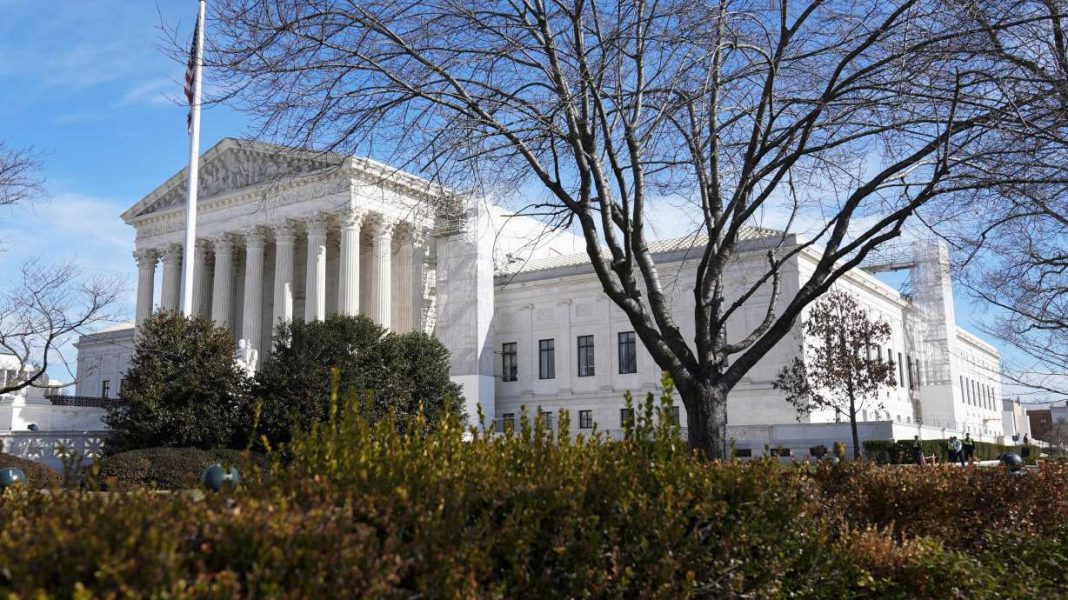WASHINGTON — On Monday, the Supreme Court reinstated Donald Trump’s name on the 2024 presidential primary ballots, dismissing state efforts to hold the former Republican president responsible for the Capitol riot.
The court’s decision, made just a day before the Super Tuesday primaries, clarified that states cannot invoke a post-Civil War constitutional provision to exclude presidential candidates from ballots without prior action from Congress.
This ruling puts an end to attempts in Colorado, Illinois, Maine, and other states to remove Trump, the leading candidate for his party’s nomination, from the ballot due to his efforts to overturn his 2020 election loss to Democrat Joe Biden, which culminated in the Jan. 6, 2021, attack on the Capitol.
The case involving Trump was the Supreme Court’s first encounter with a provision of the 14th Amendment, adopted post-Civil War, designed to prevent former officeholders who “engaged in insurrection” from holding office again.
In a groundbreaking ruling, Colorado’s Supreme Court had determined that Section 3 of the provision could be applied to Trump, whom the court found to have incited the Capitol attack. No previous court had applied Section 3 to a presidential candidate.
Some election analysts have cautioned that a ruling necessitating congressional action to implement Section 3 could potentially reignite a battle over using the provision to disqualify Trump should he win the election. In one hypothetical scenario, a Democrat-controlled Congress could attempt to reject the certification of Trump’s election on Jan. 6, 2025, under this clause.
The issue could then potentially return to the court.
Both parties had urged the court to expedite its decision, which was heard less than a month ago, on Feb. 8. At that time, the justices appeared inclined to rule in favor of Trump.
Trump had been removed from the ballots in Colorado, Maine, and Illinois, but all three rulings were temporarily suspended pending the Supreme Court’s decision.
This case represents the court’s most direct involvement in a presidential election since Bush v. Gore, a decision made 25 years ago that effectively awarded the 2000 election to Republican George W. Bush. It’s just one of several cases involving Trump directly or that could impact his chances of becoming president again, including a case set for arguments in late April about whether he can be criminally prosecuted on election interference charges, including his role in the Jan. 6 Capitol attack. The timing of the high court’s intervention has sparked questions about whether Trump will be tried before the November election.
The February arguments marked the first time the high court had heard a case involving Section 3. This two-sentence provision, intended to prevent some Confederates from holding office again, states that those who violate oaths to support the Constitution are barred from various positions including congressional offices or serving as presidential electors. However, it does not specifically mention the presidency.
Justices from both conservative and liberal sides questioned the case against Trump. Their primary concern was whether Congress must act before states can invoke the 14th Amendment. There were also questions about whether the president is covered by the provision.
The attorneys representing Republican and independent voters who sued to remove Trump’s name from the Colorado ballot argued that there is ample evidence that the events of Jan. 6 constituted an insurrection and that it was incited by Trump, who had urged a crowd of his supporters at a rally outside the White House to “fight like hell.” They contended that it would be absurd to apply Section 3 to everything but the presidency or that Trump is somehow exempt. They also argued that the provision does not require enabling legislation.
Trump’s attorneys presented several arguments for why the amendment cannot be used to keep him off the ballot. They argued that the Jan. 6 riot wasn’t an insurrection and, even if it was, Trump did not go to the Capitol or join the rioters. They also stated that the wording of the amendment excludes the presidency and candidates running for president. Even if all these arguments were rejected, they said, Congress would need to pass legislation to revive Section 3.
The case was decided by a court that includes three justices appointed by Trump during his presidency. They have considered many Trump-related cases in recent years, rejecting his claims of fraud in the 2020 election and refusing to protect his tax records from Congress and prosecutors in New York.
The 5-4 decision in the Bush v. Gore case over 23 years ago was the last time the court was so deeply involved in presidential politics. Justice Clarence Thomas is the only member of the court who was on the bench then. Thomas has disregarded calls by some Democratic lawmakers to recuse himself from the Trump case because his wife, Ginni, supported Trump’s effort to overturn the 2020 election results and attended the rally that preceded the storming of the Capitol by Trump supporters.




Agree with the decision. #SupremeCourt #Trump
Agree with decision. congress should not interfere with election process.